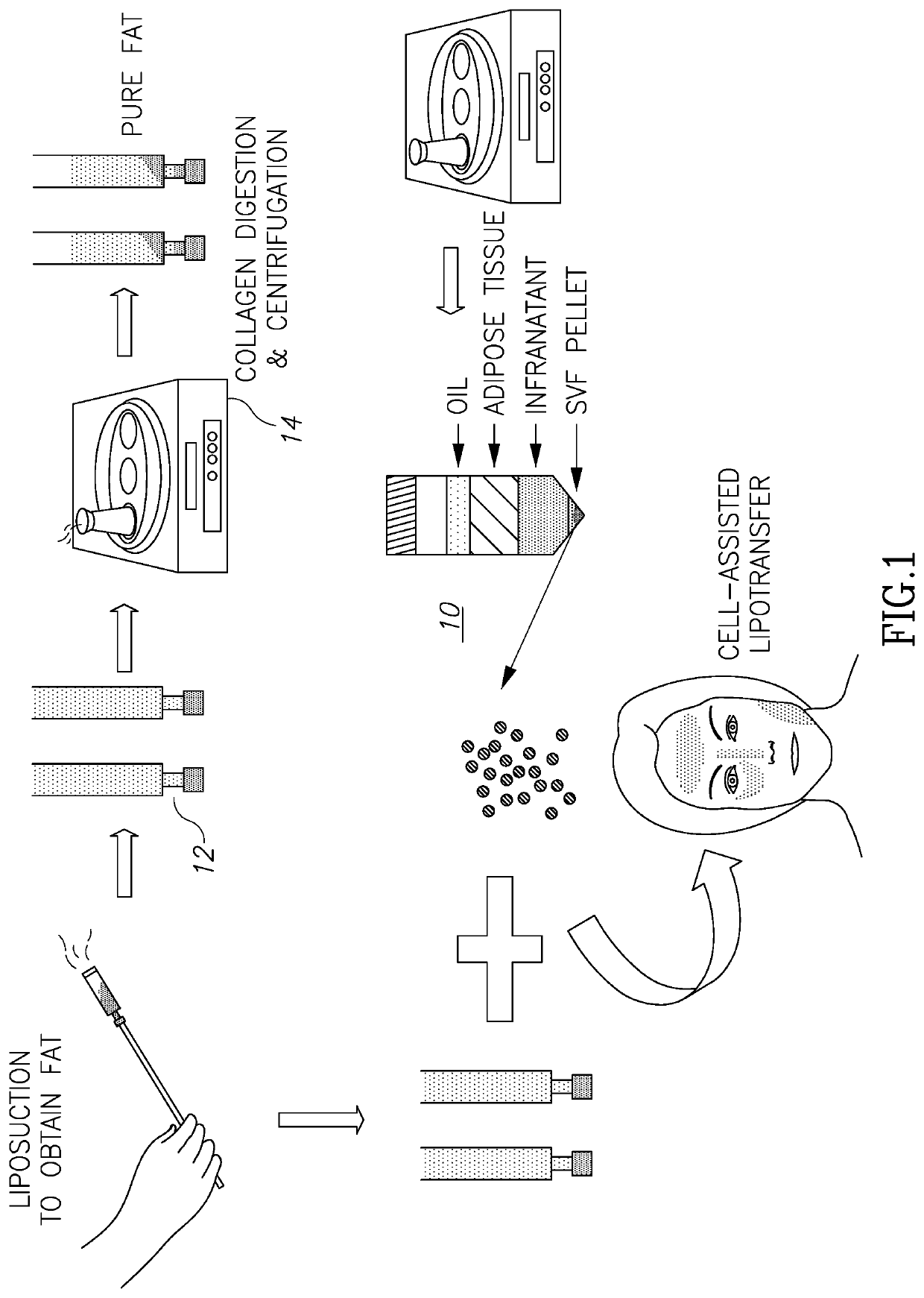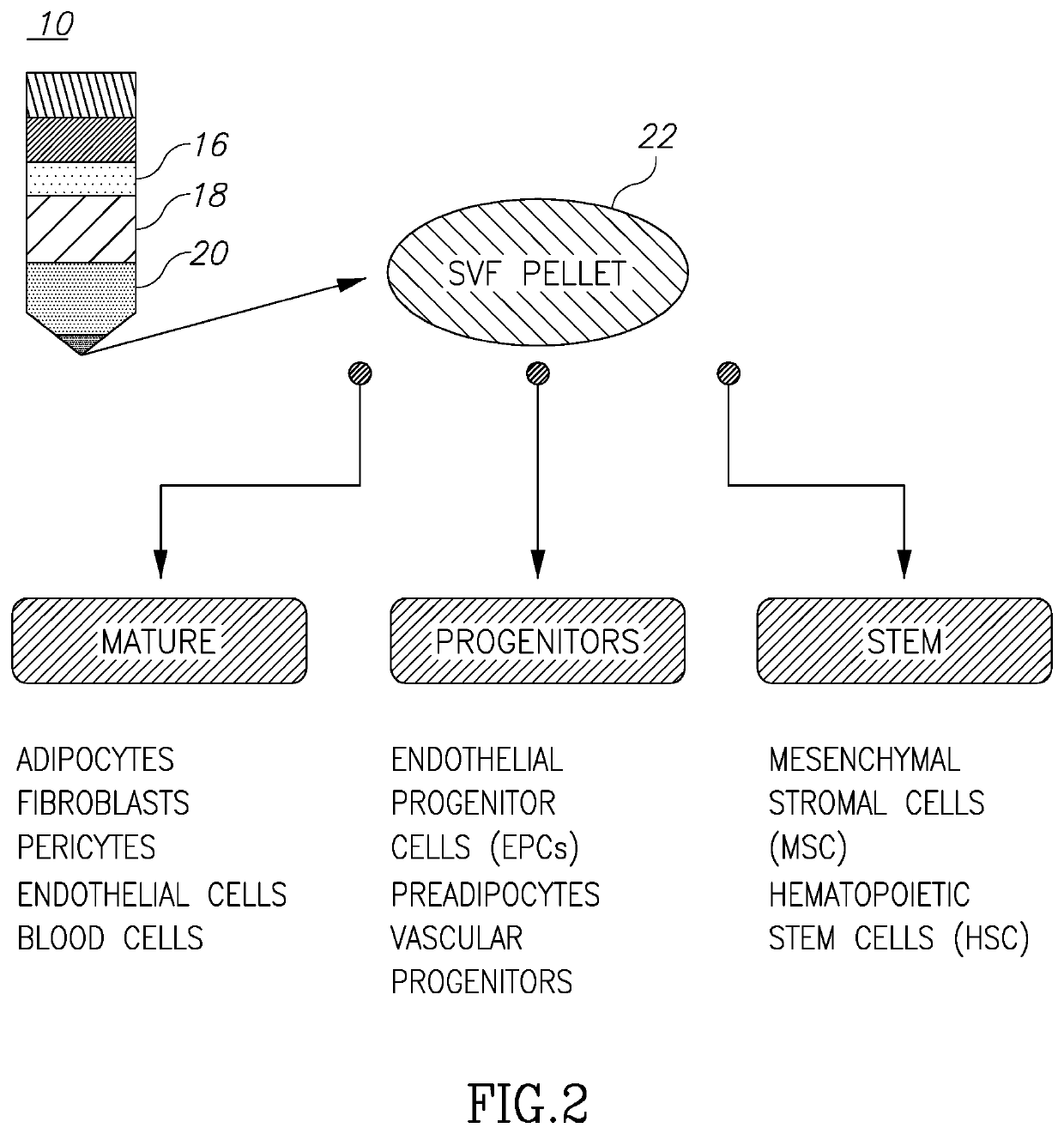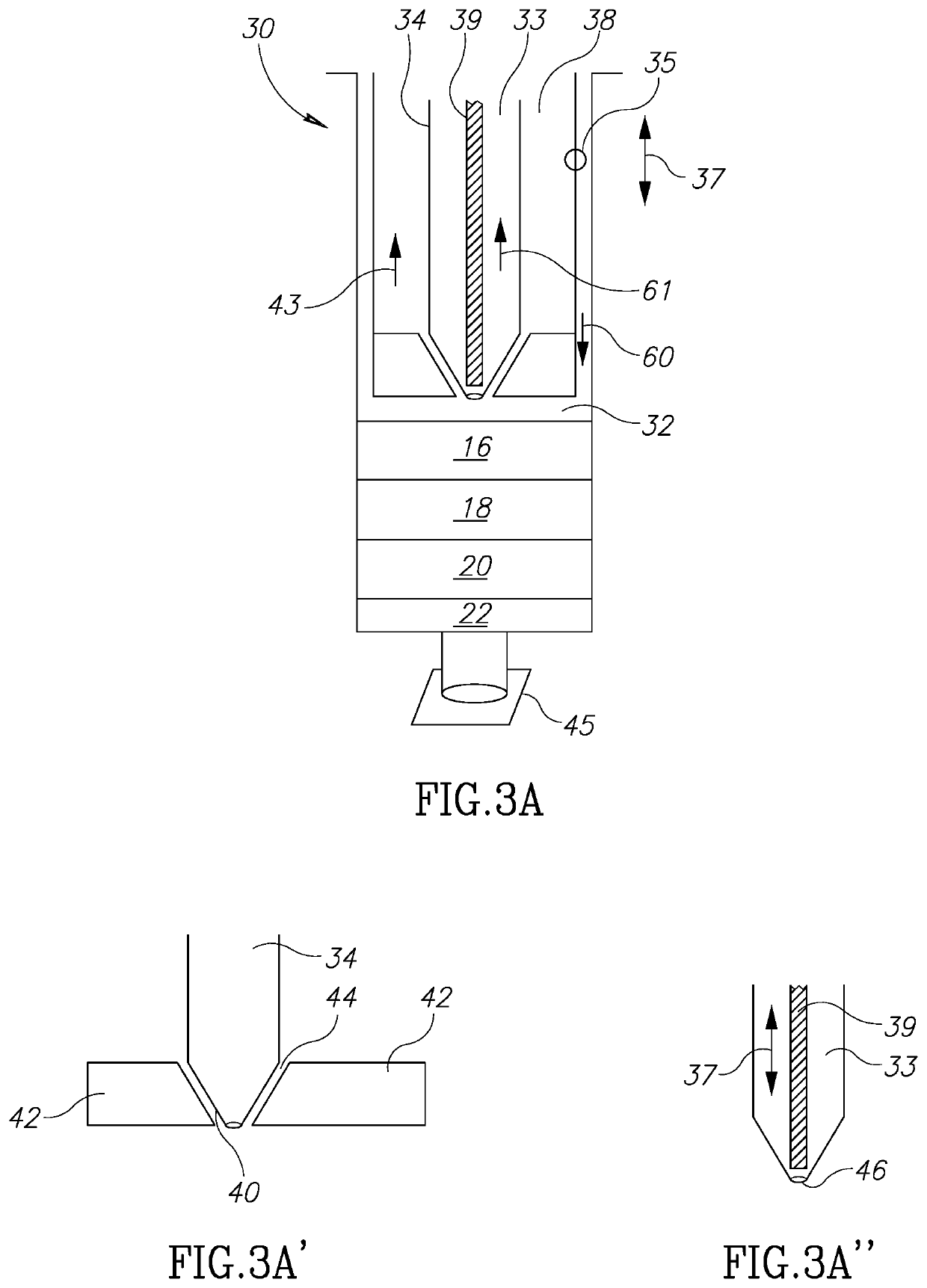System and method for harvesting autologous adipose tissue
a technology of autologous adipose tissue and harvesting method, which is applied in the field of medical aesthetics, can solve the problems of cumbersome and expensive known techniques, unacceptably high rejection rate, and complicated and expensive costs
- Summary
- Abstract
- Description
- Claims
- Application Information
AI Technical Summary
Benefits of technology
Problems solved by technology
Method used
Image
Examples
Embodiment Construction
[0034]Turning now to FIGS. 1 and 2, these figures (taken from the above-cited Tan et al. article) illustrate the general known process of harvesting and filtering adipose tissue and are self-explanatory. What is significant to note is the illustrated levels of material 10 shown in those figures. This separation of components comes about after centrifugation of the tubes 12 in the centrifuge 14. Of these materials, the desired reinjected material is a mix of the purified components which are located at levels 18 (the adipose tissue) and 22 (the SVF pellet or adipose-derived stem cells), although sometimes only the adipose tissue separation material may be desirable. The problem, of course, is how to separate the desirable components, such as 18 and 22, from the not-needed components like 16 (oils and lipids) and 20 (infranatant), and not allowing intermixing of desirable and not-needed components, all within an environment so as to prevent contamination.
[0035]Turning now to the opera...
PUM
| Property | Measurement | Unit |
|---|---|---|
| volume | aaaaa | aaaaa |
| area | aaaaa | aaaaa |
| structure | aaaaa | aaaaa |
Abstract
Description
Claims
Application Information
 Login to View More
Login to View More - R&D
- Intellectual Property
- Life Sciences
- Materials
- Tech Scout
- Unparalleled Data Quality
- Higher Quality Content
- 60% Fewer Hallucinations
Browse by: Latest US Patents, China's latest patents, Technical Efficacy Thesaurus, Application Domain, Technology Topic, Popular Technical Reports.
© 2025 PatSnap. All rights reserved.Legal|Privacy policy|Modern Slavery Act Transparency Statement|Sitemap|About US| Contact US: help@patsnap.com



